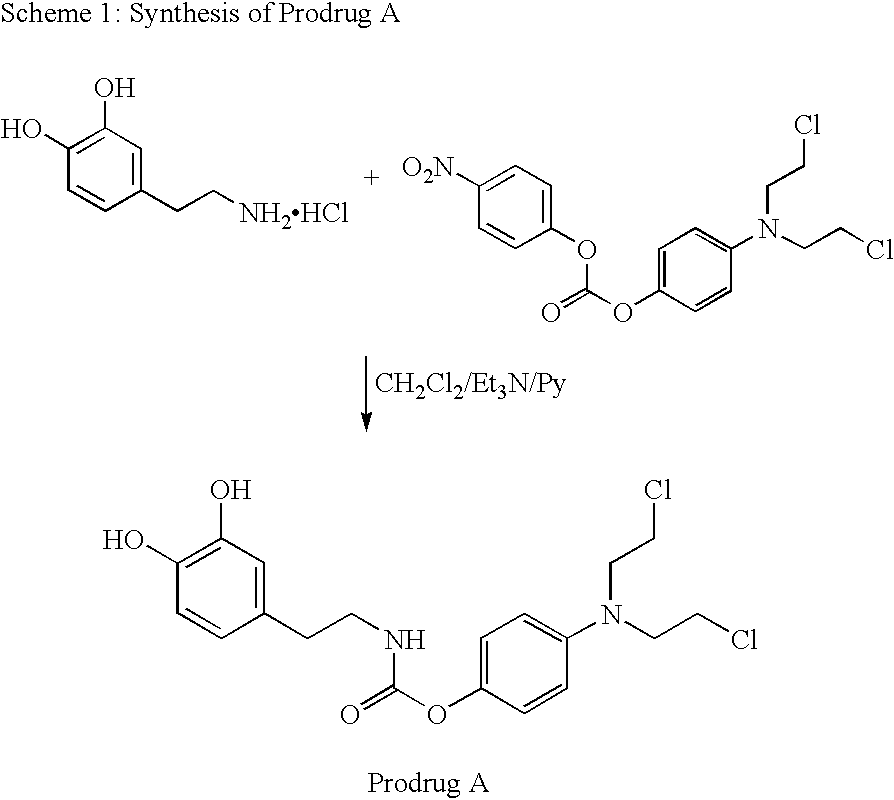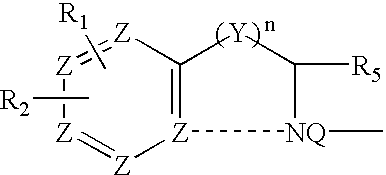Method of treating melanoma
a technology for melanoma and melanoma cells, applied in the field of melanoma treatment methods, can solve the problems of insufficient treatment of disseminated melanoma, the potential of rapid metastasis of melanoma, and the inability to treat disseminated melanoma,
- Summary
- Abstract
- Description
- Claims
- Application Information
AI Technical Summary
Problems solved by technology
Method used
Image
Examples
synthesis examples
B. Synthesis Examples
1. Synthesis of N-(N-bis-chlorethyl-4-amino-phenyloxycarbonyl)-3-hydroxy-tyramine (Prodrug A--Scheme 1) ##STR15##
1.0 g, 5.27 mmol of 3-hydroxytyramine hydrochloride was mixed with 20 ml of dry dichloromethane. To the stirred suspension 1 ml of triethylamine was added, followed by 1 ml of pyridine. The suspension was stirred for 5 min and then mixed with 2.32 g, 5.27 mmol of N-bis-chloroethyl-aminophenyloxy-p-nitro-phenyloxycarbonate. The suspension was stirred for 4 days at room temperature. The deep yellow solution was concentrated in vacuo. The residue was dissolved in ethyl acetate and washed with 0.1 M hydrochloric acid, 0.5 M sodium hydrogencarbonate solution, and distilled water. The organic fraction was dried over sodium sulphate, filtered and concentrated in vacuo. The residue was chromatographed on silica gel using gradient elution with ethylacetate and ethanol, resulting in 490 mg of a yellow solid. Rf=0.7(1:1 Ethylacetate: Ethanol), Mpt=80.degree. C. ...
PUM
| Property | Measurement | Unit |
|---|---|---|
| Structure | aaaaa | aaaaa |
| Cytotoxicity | aaaaa | aaaaa |
Abstract
Description
Claims
Application Information
 Login to View More
Login to View More - R&D
- Intellectual Property
- Life Sciences
- Materials
- Tech Scout
- Unparalleled Data Quality
- Higher Quality Content
- 60% Fewer Hallucinations
Browse by: Latest US Patents, China's latest patents, Technical Efficacy Thesaurus, Application Domain, Technology Topic, Popular Technical Reports.
© 2025 PatSnap. All rights reserved.Legal|Privacy policy|Modern Slavery Act Transparency Statement|Sitemap|About US| Contact US: help@patsnap.com



